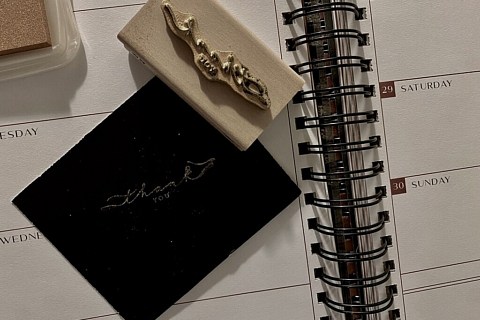There was a moment when, like it or not, I became a Houstonian.
It began with a friend from high school. She was visiting from North Texas, and I was to show around the city. It felt like Judgment Day, the way she asked it, her eyes wide and scrutinizing and her brown hair wavy and curling over. We were no longer childhood friends; we had become as opposite as North and south, day and night, Houston and Dallas.
“What’s so great about Houston, anyway?” She said.
And just suddenly, every aspect of my life here felt called into question. The memory of Sundays passed lazily in the grass at Menil Park felt tarnished. I remembered lattes from hole-in-the-wall cafés with more bitterness than before. There would be no more tacos or margaritas. I longed for absolution.
This is the insecurity leftover from our forefathers, the anxieties of a Houston our parents and aunts and uncles tried to hide from us. Because deep in the identity of every resident is an insufferable need to prove the Houstonian life is a one worth living.
Such was the existential crisis that plagued Houston a decade ago. Marketing proved difficult. The best campaigns at the time included “Houston: Expect the Unexpected” and “It’s Hot.” Unsurprisingly, these remained fruitless endeavors.
These feelings haunted the two friends and marketing geniuses, David Thompson and Randy Twaddle, who would go on to change the face of the city’s identity with a brilliant campaign that provided, for maybe the first time, an outlet for Houstonians to accept themselves.
“I think it was sort of a beginning of a renaissance for Houston’s understanding of itself,” Thompson said of his now famous (and infamous, to some close-minded marketing types) “Houston: It’s Worth It,” or HIWI. “And we started that. We definitely started that.”
They did. Thompson and Twaddle were thinking about the city’s image one day and all the things wrong with its image and all the ways outsiders could look down on the city. Then, they decided it didn’t matter. They looked at those affliction, which they later enumerated into a widely successful jingle and video, and decided the city was worth them.
Those afflictions? I know them. Everyone in Houston knows them. Thompson said he has horror stories with all of them—from the heat to the flooding to the mosquitos to the traffic.
Even in the ten years since “Houston: It’s Worth It,” those afflictions haven’t changed. But a good and honest campaign, Thompson said, had to acknowledge other people’s perceptions of Houston—and these were, altogether, those same afflictions.
“It needed to talk about the realities of Houston,” Thompson said.
Although Thompson believes that he and Twaddle started a paradigm shift about the city, he wonders at the relevance of HIWI now. He believes the next big project for Houston is expanding the greenery. He sees the future of the city in the $200-million Bayou Greenway project, which aims to turn the bayous into a network of linear parks.
“Right now, Houston is undergoing—almost in its own great, selfless, underground way—a massive transformation in its infrastructure,” Thompson said. “I think that is my generation’s Astrodome or NASA.”
But he might not be stick around to see it. While Twaddle has already moved on, Thompson has only recently thought about leaving Houston—not because of any discord with the city, but because he has lived on the bayou since ‘82 and, like every Houstonian, longs for a change of pace.
I know this feeling well. I, too, have sometimes fallen victim to sentiments for simpler, quieter cities like New York or Chicago, where it’s just a little cooler and the government takes care of it’s people with zoning laws and equal rights ordinances. But, like Thompson, it’s just a pipe dream for now.
The campaign reached deeper than just addressing the ideas of others. Yes, our biggest critics are the outsiders, the childhood friends from Dallas who ask us to show them around but just can’t seem to get it. When we take them for a coffee in Rice Village and a ride on the METROrail through Downtown, it somehow doesn’t feel like enough.
“Houston: It’s Worth It” acknowledges this discrepancy.
“The only way to describe the city is through the aggregate of the people’s understanding,” Thompson said. “It doesn’t manifest itself in a Golden Gate Bridge. It doesn’t manifest itself in a Freedom Tower. We don’t have these strong, super singular cultural underpinnings.
“We have a huge fragmented amount of experiences that we simply put in one place.”
Perhaps the greatest unnamed affliction is the inability to communicate what exactly the spirit of Houston is, because the sprawling concrete jungle is more abstract than we know; it is a collection of stories and faces and colors and ideas.
There is a Houston experience at the University of Houston and there is a Houston experience at Rice University. They are both urban, Tier One institutions but do they share a common lifestyle? Undoubtedly, no. It is the same as the disparity between the Third Ward and River Oaks. They are both fragments of the same city.
“And that’s what Houston has always been: a lot of different points of view,” Thompson said.
Of course, we wouldn’t have it any other way.





Recent Comments